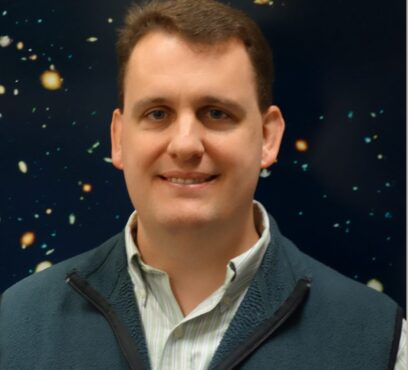Robert Simcoe
Professor, Director MIT Kavli Institute
Robert A. Simcoe came to MIT as a Pappalardo Postdoctoral Fellow in Physics in 2003. He specializes in observational astrophysics, with particular emphasis on the chemistry of galaxies and intergalactic matter in the early universe. An amateur astronomer and telescope maker from his youth, Simcoe went on to earn his A.B. in Astrophysical Sciences from Princeton in 1997, and his Ph.D. in Astronomy from Caltech in 2003. He joined the MIT Physics faculty in 2006, after which he served as PI and Project Scientist for the FIRE infrared spectrometer, a facility instrument for the 6.5 meter Magellan telescopes. He was awarded an Alfred P. Sloan foundation research fellowship in 2009. On January 16, 2019, Simcoe became director of the MIT Kavli Institute.
The 2024 recipient of the Muhlmann Award is Dr. Robert Simcoe for his leadership in building Folded-port InfraRed Echellette (FIRE) that has contributed to transformational discoveries in multiple subdisciplines. The Maria and Eric Muhlmann Award is given for recent significant observational results made possible by innovative advances in astronomical instrumentation, software, or observational infrastructure.
Unique amongst instruments in its class, FIRE allows observations in two key modes: one at spectral resolution allowing quick and effective classification of faint candidate objects of interest and another at high spectral resolution, allowing detailed follow-up and characterization of rare, diamond-in-the-rough targets. FIRE has been used to classify candidates for room-temperatures stars. Known as Y-class brown dwarfs, these ultra-low mass stars provide insight into the physics that separate the smallest and coolest stars from the largest planets. FIRE has also been used to identify the most distant known supermassive black holes analogous to black holes identified UV and optical wavelengths in the nearby universe, but whose signatures are shifted by cosmic expansion into the infrared. At early times in the Universe, these black holes are thought to be critical components of the formation and evolution of early galaxies.
Simcoe’s leadership on FIRE led to its development, construction, and commissioning in under three years. It was funded through one of the largest astrophysics’ instrumentation awards in its program class from the National Science Foundation at the time. Simcoe’s leadership continued through active and engaged participation in the research of his user community, with his collaborators commenting on the importance of his insights in their ground-breaking work. Simcoe has also mentored numerous early career researchers who have been honored with the most competitive research fellowships and are now recognized leaders in their respective sub-disciplines.
Simcoe’s collective instrumentation development programs have received over $10 million in funding from the National Science Foundation, including his current project, the Large Lenslet Array Magellan Spectrograph (LLAMAS). Simcoe has served on numerous observatory science advisory committees and actively reviews and advises other major instrumentation projects at Las Campanas Observatory, all of which pay forward to the next generation of instrumentalists and researchers.

